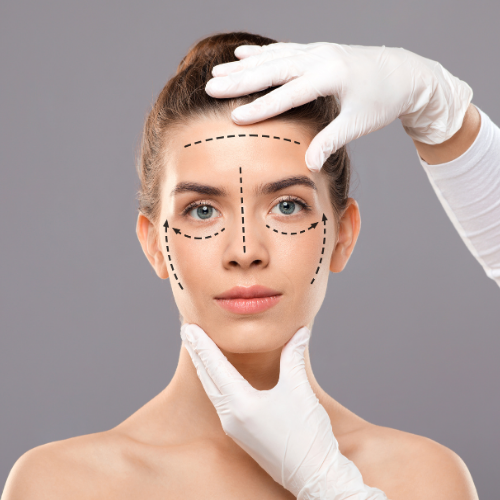Jowl Aesthetics

What is Jowl Aesthetics?
Jowl Aesthetics is a cosmetic procedure aimed at addressing sagging or drooping skin and tissues in the lower jaw area, commonly known as jowls. This procedure is designed to restore a more youthful and rejuvenated appearance to the jawline and lower face. Jowl Aesthetics can involve various surgical techniques to lift and tighten the skin and underlying tissues, reducing the appearance of jowls and enhancing overall facial harmony. It is sought after for its ability to improve facial contours and boost self-confidence.
What are the Jowl Aesthetics Surgery Techniques?
Jowl Aesthetics surgery techniques may include:
Traditional Jowl Aesthetics: This comprehensive approach involves incisions made along the hairline and behind the ears to access and lift jowl tissues.
Mini Jowl Aesthetics: A less invasive option that targets mild jowling using shorter incisions, resulting in a shorter recovery period.
What is the Pre-Operative Process for Jowl Aesthetics?
Preparing for Jowl Aesthetics involves several key steps:
Consultation: Patients consult with a board-certified plastic surgeon to discuss goals, assess jowl concerns, and create a personalized treatment plan.
Medical Evaluation: A comprehensive medical history and physical examination are conducted to ensure the patient’s suitability for surgery.
Surgical Plan: The surgeon outlines the specific surgical approach, discusses expected outcomes, and addresses any questions or concerns.
Preoperative Instructions: Patients receive instructions on medication, alcohol, smoking cessation, and dietary restrictions leading up to the procedure.
Informed Consent: Patients review and sign informed consent forms, acknowledging their understanding of the procedure’s risks and benefits.
What is the Post-Operative Process for Jowl Aesthetics?
Following Jowl Aesthetics, patients can expect the following:
Immediate Recovery: Patients spend time in a recovery area for monitoring and pain management.
Swelling and Bruising: Swelling and bruising are common initially but gradually subside.
Diet and Medication: A soft diet and prescribed medications help with comfort and healing.
Follow-Up Appointments: Multiple follow-up appointments with the surgeon monitor progress and address any concerns.
Resuming Normal Activities: Patients can gradually resume normal activities as advised by the surgeon, with complete recovery taking time.





